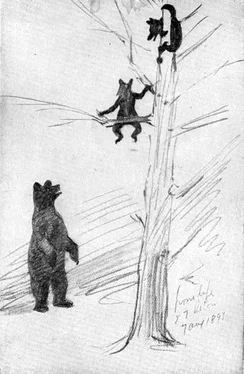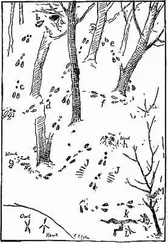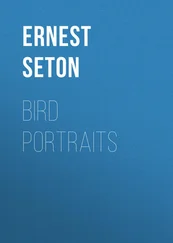Ernest Seton - Wild Animals at Home
Здесь есть возможность читать онлайн «Ernest Seton - Wild Animals at Home» весь текст электронной книги совершенно бесплатно (целиком полную версию без сокращений). В некоторых случаях можно слушать аудио, скачать через торрент в формате fb2 и присутствует краткое содержание. Год выпуска: 2009, Жанр: Природа и животные, на английском языке. Описание произведения, (предисловие) а так же отзывы посетителей доступны на портале библиотеки ЛибКат.
- Название:Wild Animals at Home
- Автор:
- Жанр:
- Год:2009
- ISBN:нет данных
- Рейтинг книги:5 / 5. Голосов: 1
-
Избранное:Добавить в избранное
- Отзывы:
-
Ваша оценка:
- 100
- 1
- 2
- 3
- 4
- 5
Wild Animals at Home: краткое содержание, описание и аннотация
Предлагаем к чтению аннотацию, описание, краткое содержание или предисловие (зависит от того, что написал сам автор книги «Wild Animals at Home»). Если вы не нашли необходимую информацию о книге — напишите в комментариях, мы постараемся отыскать её.
Wild Animals at Home — читать онлайн бесплатно полную книгу (весь текст) целиком
Ниже представлен текст книги, разбитый по страницам. Система сохранения места последней прочитанной страницы, позволяет с удобством читать онлайн бесплатно книгу «Wild Animals at Home», без необходимости каждый раз заново искать на чём Вы остановились. Поставьте закладку, и сможете в любой момент перейти на страницу, на которой закончили чтение.
Интервал:
Закладка:
There is one habit of the Eastern Chipmunk that I have not noted in the mountain species, and that is the habit of song. In the early spring and late autumn when the days are bright and invigorating, the Eastern Chipmunk will mount some log, stump or other perch and express his exuberant joy in a song which is a rapid repetition of a bird-like note suggested by "Chuck," "Chuck," or "Chock," "Chock." This is kept up two or three minutes without interruption, and is one of those delightful woodland songs whose charm comes rather from association than from its inherent music.
If our Western Chipmunk is as far ahead in matters musical as he is in form and other habits, I shall expect him to render no less than the song of a nightingale when he gives himself up to express his wild exuberance in a chant.
I shall never forget the days I spent with a naturalist friend in an old mill building in western Manitoba. It was in a pine woods which was peopled with these little Chipmunks. They had hailed the mill and its wood piles, and especially the stables, with their squandered oats, as the very gifts of a beneficient Providence for their use and benefit. They had concentrated on the mill; they were there in hundreds, almost thousands, and whenever one looked across the yard in sunny hours one could see a dozen or more together.
The old mill was infested with them as an old brewery with rats. But in many respects besides beauty they were an improvement on rats: they did not smell, they were not vicious, and they did not move by night.
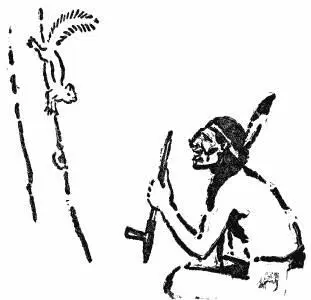
During the daytime they were everywhere and into everything. Our slender stock of provisions was badly reduced when, by mischance, the tin box was left open a few hours, but we loved to see so much beautiful life about and so forgave them. One of our regular pleasures was to sit back after a meal and watch these pert-eyed, four-legged birds scramble onto the table, eat the scraps and lick all the plates and platters clean.
Like all the Chipmunks and Ground-squirrels, this animal has well-developed cheek-pouches which it uses for carrying home seeds and roots which serve for food in the winter. Or perhaps we should say in the early spring, for the Chipmunk, like the Ground-squirrel, goes into the ground for a long repose as soon as winter comes down hard and white.
Yet it does not go so early or stay so late as its big cousin. October still sees it active, even running about in the snow. As late as October 31st at Breckenridge, Col., I saw one sitting up on a log and eating some grass or seeds during a driving snowstorm. High up in the Shoshonees, after winter had settled down, on October 8, 1898, I saw one of these bright creatures bounding through the snow. On a stone he paused to watch me and I made a hasty sketch of his attitude.
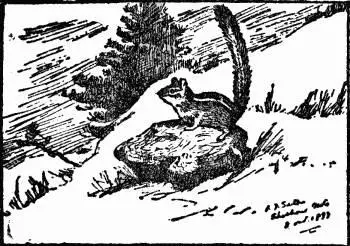
Then, again, it is out in the spring, early in April, so that it is above ground for at least seven months of the year. Its nest is in a chamber at the end of a long tunnel that it digs under ground, usually among roots that make hard digging for the creatures that would rout them out. Very little is known as yet, however, about the growth or development of the young, so here is an opportunity for the young naturalist who would contribute something to our knowledge of this interesting creature.
A STRIPED PIGMY—THE LEAST CHIPMUNK
Closely akin to this one and commonly mistaken for its young, is the Least Chipmunk ( Eutamias minimus ), which is widely diffused in the great dry central region of the Continent. Although so generally found and so visible when found, its history is practically unknown. It probably lives much like its relatives, raising a brood of four to six young in a warm chamber far underground, and brings them up to eat all manner of seeds, grains, fruits, herbs, berries, insects, birds, eggs, and even mice, just as do most of its kinsmen, but no one has proved any of these things. Any exact observations you may make are sure to be acceptable contributions to science.
IX
The Rabbits and their Habits
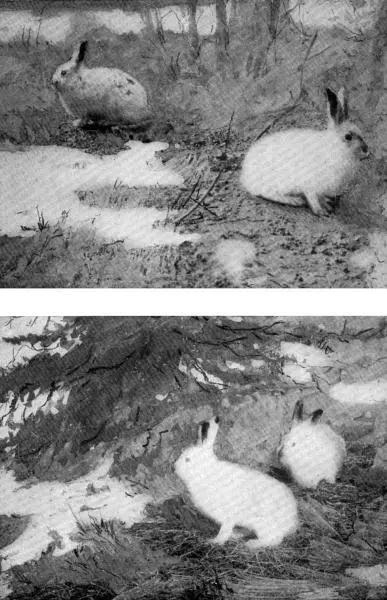
XXVII. The Snowshoe Hare is a cross between a Rabbit and a Snowdrift
Captives; photo by E. T. Seton
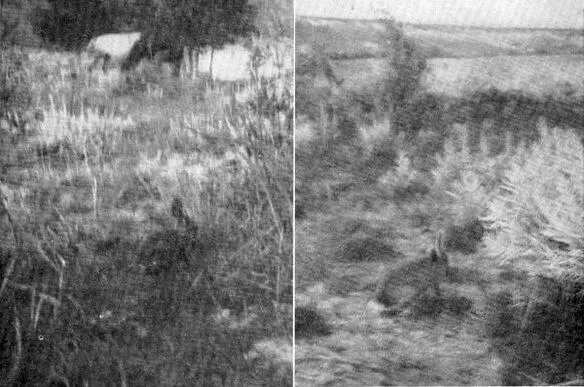
XXVIII. The Cottontail freezing
Photos after sunset, by E. T. Seton
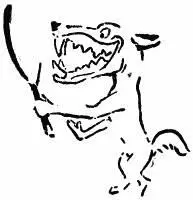
If the Wolf may be justly proud of his jaws and the Antelope of his legs, I am sure that the Rabbit should very properly glory in his matchless fecundity. To perfect this power he has consecrated all the splendid energies of his vigorous frame, and he has magnified his specialty into a success that is worth more to his race than could be any other single gift.

Rabbits are without weapons of defense, and are simple-minded to the last degree. Most are incapable of long-distance speed, but all have an exuberance of multiplication that fills their ranks as fast as foe can thin the line. If, indeed, they did not have several families, several times a year, they would have died out several epochs back.
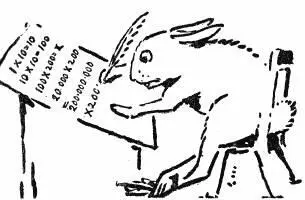
There are three marked types of Rabbits in the Rockies—the Cottontail, the Snowshoe, and the Jackrabbit. All of them are represented on the Yellowstone, besides the little Coney of the rocks which is a remote second cousin of the family.
MOLLY COTTONTAIL, THE CLEVER FREEZER
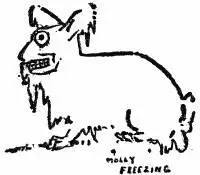
Molly Freezing
I have often had occasion to comment on the "freezing" of animals. When they are suddenly aware of a near enemy or confronted by unexpected situations, their habit is to freeze —that is, become perfectly rigid, and remain so until the danger is past or at least comprehended.
Molly Cottontail is one of the best "freezers." Whenever she does not know what to do, she does nothing, obeying the old Western rule, "Never rush when you are rattled." Now Molly is a very nervous creature. Any loud, sharp noise is liable to upset her, and feeling herself unnerved she is very apt to stop and simply "freeze." Keep this in mind when next you meet a Cottontail, and get a photograph.
In July, 1902, I tried it myself. I was camped with a lot of Sioux Indians on the banks of the Cheyenne River in Dakota. They had their families with them, and about sundown one of the boys ran into the tepee for a gun, and then fired into the grass. His little brother gave a war-whoop that their "pa" might well have been proud of, then rushed forward and held up a fat Cottontail, kicking her last kick. Another, a smaller Cottontail, was found not far away, and half a dozen young redskins armed with sticks crawled up, then suddenly let them fly. Bunny was hit, knocked over, and before he could recover, a dog had him.
Читать дальшеИнтервал:
Закладка:
Похожие книги на «Wild Animals at Home»
Представляем Вашему вниманию похожие книги на «Wild Animals at Home» списком для выбора. Мы отобрали схожую по названию и смыслу литературу в надежде предоставить читателям больше вариантов отыскать новые, интересные, ещё непрочитанные произведения.
Обсуждение, отзывы о книге «Wild Animals at Home» и просто собственные мнения читателей. Оставьте ваши комментарии, напишите, что Вы думаете о произведении, его смысле или главных героях. Укажите что конкретно понравилось, а что нет, и почему Вы так считаете.
